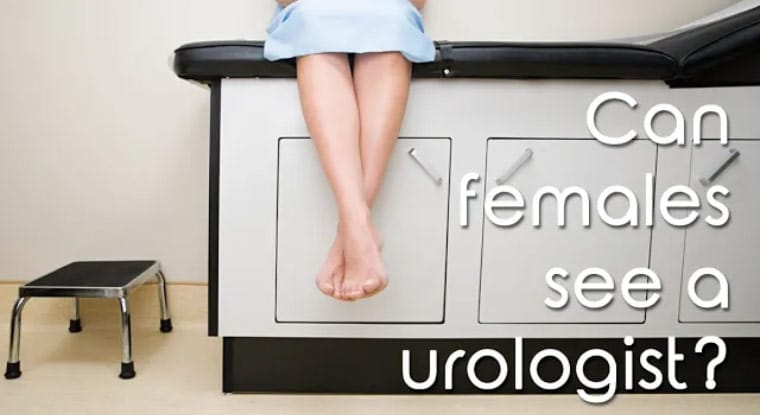Choosing between surgery and radiation for prostate cancer? Our urologists provide expert insights for informed decisions at Advanced Urology Institute.
Continue readingCan females see a urologist?
There is a misconception that urologists only see male patients. In fact, over 40 percent of patients seen by urologists are female. Urologists are specialists in treating disorders of the urinary tract — the system of tubes, muscles and organs that process, convey and eventually expel urine from the body. So when women develop urological issues, such as loss of bladder control, pelvic organ prolapse and incontinence, the best doctor to treat them is the urologist. Warning signs of issues involving the urinary system include:
- 1. Frequent urge to urinate.
- Leaking urine.
- Frequent urination, particularly at night.
- Pain in the side or back.
- Discomfort or burning sensation when urinating.
- Pelvic pain
- Blood in urine
Apart from treating kidney stones, urologists frequently tackle the following issues in women:
1. Loss of bladder control
 Females may have bladder control problems at any age. Also called urinary incontinence (UI), loss of bladder control is a common problem in women and they are twice as likely to have the problem as men. There are different types of urinary incontinence. For example, women who can’t hold urine as they cough, sneeze or exercise are said to have stress incontinence. This type of UI occurs when the muscles supporting the bladder are weakened by pregnancy, childbirth, aging or other factors.
Females may have bladder control problems at any age. Also called urinary incontinence (UI), loss of bladder control is a common problem in women and they are twice as likely to have the problem as men. There are different types of urinary incontinence. For example, women who can’t hold urine as they cough, sneeze or exercise are said to have stress incontinence. This type of UI occurs when the muscles supporting the bladder are weakened by pregnancy, childbirth, aging or other factors.
Overactive bladder is another type of urinary incontinence that is characterized by a strong, sudden and uncontrollable urge to urinate even when the bladder is not full. Apart from the need to reach the bathroom quickly and to pass urine 8 or more times within 24 hours, overactive bladder can cause embarrassing urine leaks and compel women to avoid certain activities and things they would like to enjoy.
2. Recurrent urinary tract infections
Women are more susceptible to recurrent urinary tract infections than men because of anatomical differences. Most women will have a urinary tract infection at a certain point in their lives. The infections occur when bacteria get into the urinary tract and are often characterized by burning sensation or pain during urination, sudden urge to pass urine, blood in urine or trouble urinating. Recurrent UTIs can lead to complications and require prompt, proper treatment.
3. Fallen bladder
In women, the bladder is kept in position by tissues called pelvic muscles. But in cases where these tissues (wall between bladder and vagina) are too stretched or weakened to hold the bladder in position, the bladder may fall into the vagina — a condition known as bladder prolapse or cystocele. A fallen bladder may be caused by aging, childbirth, lifting heavy objects, menopause, chronic coughing, obesity or previous pelvic surgery, and may lead to urinary incontinence, urinary tract infections or overactive bladder if not treated. Surgery is typically required to correct a fallen bladder.
4. Painful bladder syndrome
Also called interstitial cystitis (IC), painful bladder syndrome is an uncomfortable and upsetting condition accompanied by lower belly and bladder discomfort. Patients tend to feel that their bladder is always full and often feel the urge to pass urine several times per day, even up to 60 times in one day. The condition can badly interfere with daily activities, forcing affected women to avoid traveling far away from home and to skip social events. It also can make sex painful or uncomfortable.
As urologists, our job is to figure out what kind of bladder problem a woman has, its underlying cause and the appropriate treatment for it. With the right treatment, which may include pelvic muscle strengthening exercises, medication, injections, implanted devices and surgery, most women are able to regain their bladder control and recover from their condition. And even for conditions that have no cure, such as interstitial cystitis, treatment tends to ease symptoms and boost the quality of life.
At Advanced Urology Institute, we see women with many different urological issues. Our aim is always to help them enjoy life and all activities they’d want to engage in by eliminating awkward urine leaks and the pain and discomfort associated with these conditions. If you are a woman who is tired of having embarrassing accidental urine leakage, check with us about effective treatment. For more information on the diagnosis and treatment of urological issues in women, visit the “Advanced Urology Institute” site.
Kidney Stone Causes, Symptoms, and Treatments
Symptoms of kidney stones
At Advanced Urology Institute, we see a lot of patients with kidney stones. A contributing factor is our location in Florida, with its massive heat and humidity which leads to dehydration and, unfortunately, to the formation of these painful stones in the kidneys. The stones commonly present with severe, intense pain — like something is stabbing you — and you can barely walk. Kidney stones are characterized by sharp pains in the side or back as they make their way to the bladder. Most of our female patients usually say the stones are more painful than labor pain. Other symptoms of kidney stones include vomiting, nausea, a constant urge to pass urine and blood in urine.
Pain from kidney stones is often sudden in onset, though it may get severe over a period of hours in some cases. The pain may be either intermittent (colicky) or steady and, depending on the stone’s location as it moves through to the bladder, it may begin in the back or flank area and radiate slowly downward to your inguinal ligament, urethra, bladder, testicles or penis. Urinary or bladder symptoms, such as frequency of urination and painful urination, may occur if the stone is located in the portion of your urethra found within the bladder wall. Not all stones cause pain and some of them are often discovered “incidentally” during pelvic or abdominal X-rays. But in patients who experience pain, they usually describe it as the worst pain they have ever experienced.
Diagnosis of kidney stones
Diagnosis of kidney stones is almost entirely based on the history of passing the stones or on occurrence of a stabbing pain in the side or back. We usually place emphasis on the patient’s clinical signs, familial disorders, presence or absence of any previous renal stones, or physical exam findings. We also perform a urinalysis to check the presence of white cells (pyuria) or blood (hematuria) in urine, a culture of urine to exclude infection, and use the presence of crystals in urine (crystalluria) to help identify the stone type. Patients are often required to strain their urine to obtain the stone for crystallographic analysis. Analyzing kidney stones for their mineral composition helps us understand your future risk and to recommend the right dietary habits and restrictions for preventing stones. But we also do a CT or CAT scan of the pelvic and abdominal area to evaluate the size, location, degree of hydronephrosis and density of the stone, all of which are important in determing how we treat and manage the stones.
Treatment
When patients complain of symptoms of kidney stones, we usually do physical exams and run tests to confirm that they actually have stones. But we often begin by getting the pain under control and calming the patients, to enable us to discuss with them available treatment options. The pain due to kidney stones is relieved using pain medication, drinking plenty of fluid to prevent dehydration, and ordering bed rest. In many cases once we have assessed that the stones can pass on their own, we allow about 7 days for them to pass spontaneously. In other instances, however, kidney stones may need to be broken down into tiny pieces or to be removed surgically.
At Advanced Urology Institute, we break up kidney stones using such techniques as percutaneous lithotripsy, cystoscopy or extracorporeal shock-wave lithotripsy. For renal stones less than 2cm in size, we generally treat them using extracorporeal shock-wave lithotripsy. During the procedure, high-intensity ultrasound (shock-waves) are passed through pouches of water placed on the skin and then directed toward the stone. The waves break the kidney stones into tiny pieces that can pass easily through the ureter. For stones located higher in the ureter or in the bladder, we often use cystoscopy to pull them out or break them up with electric energy or laser. During the procedure, the doctor passes a viewing tube with a crushing device into the ureter or bladder to pull the stone out or break it up with electric energy or laser.
For larger stones, percutaneous nephrolithotomy is a safe and reliable technique. For this procedure, you’ll be given medication to sedate you, then a viewing tube will be inserted through an incision made in your side. Once the stone is reached, it’s broken up using electric energy or ultrasound. In cases where this procedure doesn’t work, particularly when the stones are hard to reach or too large, surgery is often the preferred treatment. Surgery to remove kidney stones is performed under general anesthesia with the doctor making an incision into the side and another into the kidney or ureter to remove the stone. After the stone is removed, the incisions are stitched up.
There are many ways of treating kidney stones and the method chosen usually depends on the experience and judgment of the urologist, together with the patient’s preferences. At AUI, we prioritize the comfort of our patients, so we opt for the least invasive procedures before considering surgery. Want to know more about prevention, diagnosis and treatment of kidney stones? Find more information from the “Advanced Urology Institute” site.




